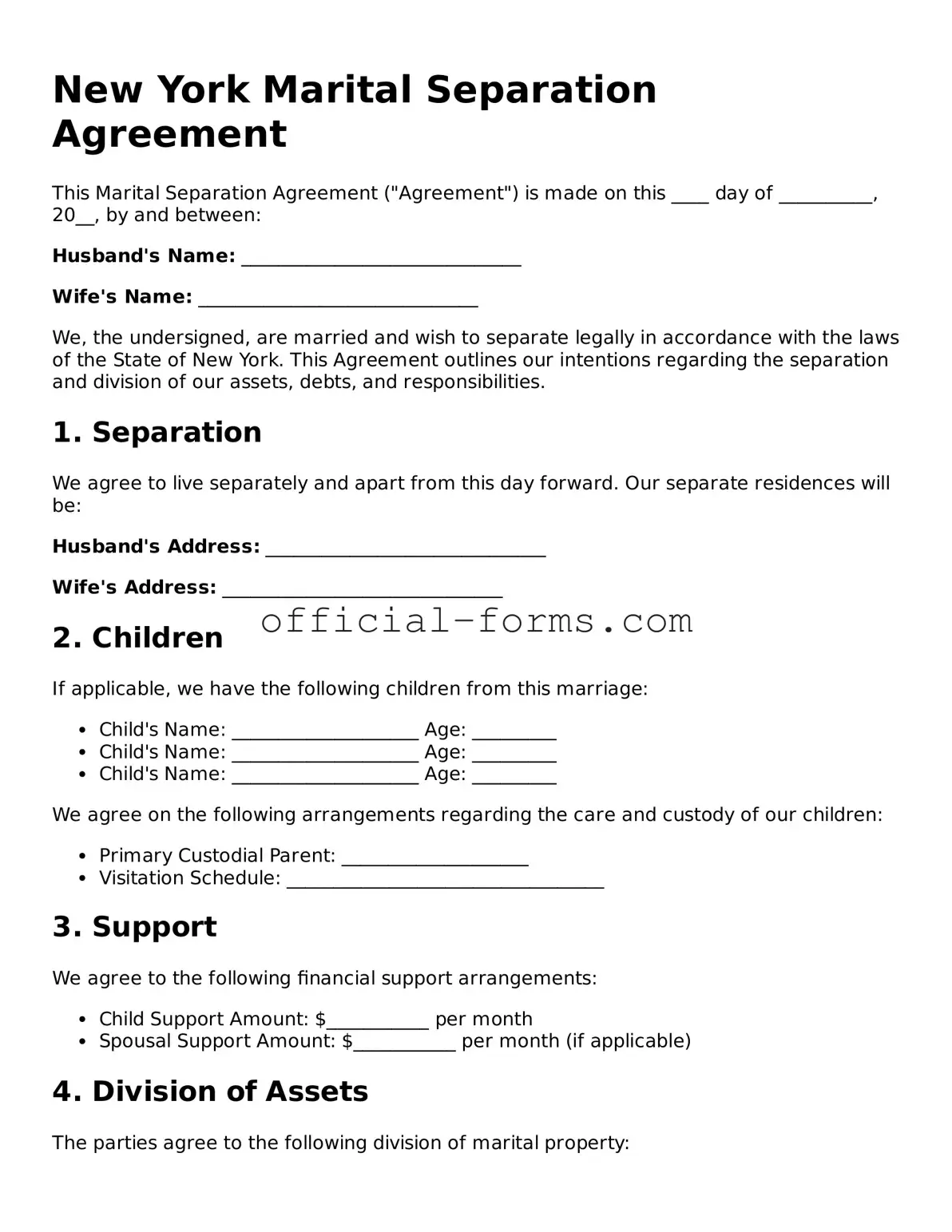Official New York Marital Separation Agreement Document
A New York Marital Separation Agreement is a legal document that outlines the terms of a couple's separation, detailing aspects such as asset division, child custody, and support obligations. This form serves as a roadmap for both parties during a transitional period, ensuring clarity and reducing potential conflicts. Understanding its components is essential for anyone considering separation in New York.
Open My Marital Separation Agreement Now
